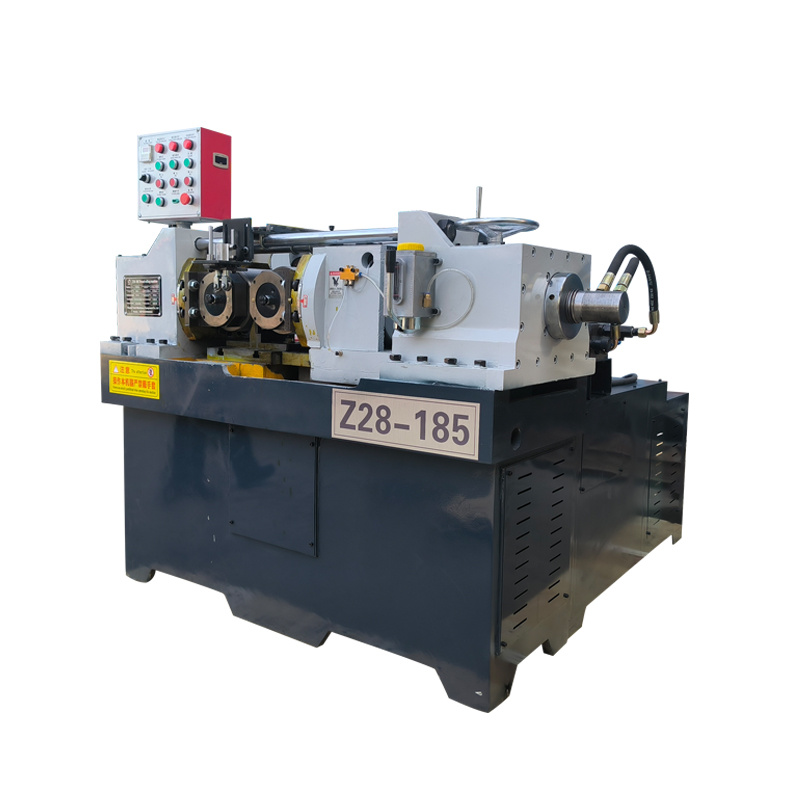What Are the Different Types of Thread Rolling Machines?
Thread rolling machines are essential tools in modern manufacturing, providing high-precision threading solutions for industries such as automotive, aerospace, and construction. Unlike traditional threading methods, thread rolling forms threads through a cold-working process, enhancing thread strength, durability, and fatigue resistance. In this article, we will explore the various types of thread rolling machines, their functionalities, and their advantages in industrial applications.
1. Flat-Die Thread Rolling Machines
Flat-die thread rolling machines are one of the most common types used in mass production. These machines use two flat dies, one stationary and one reciprocating, to roll threads onto a workpiece.
Key Features:
Uses reciprocating motion to press the workpiece between two dies
Best suited for high-speed production
Ideal for screw threads, bolts, and fasteners
Produces strong, uniform threads with excellent surface finish
Advantages:
Fast production speeds due to simple motion
High precision with minimal material waste
Improved tensile strength compared to cut threads
2. Cylindrical (or Radial) Thread Rolling Machines
Cylindrical thread rolling machines, also known as radial thread rolling machines, utilize cylindrical dies to roll threads onto round workpieces.
Key Features:
Uses rotating cylindrical dies to impart threads
Commonly used for longer bolts and rods
Offers continuous operation for high-volume production
Provides high thread accuracy and surface quality
Advantages:
Strong and consistent thread structure
Reduced tool wear, leading to lower maintenance costs
Efficient for both small and large batch production
3. Planetary Thread Rolling Machines
Planetary thread rolling machines use a set of rotating dies to roll threads onto a stationary workpiece. This method is widely used for rolling threads onto tubes and pipes.
Key Features:
The workpiece remains stationary while multiple dies rotate around it
Suitable for large-diameter and thin-walled components
Capable of producing long threads in a single pass
Ensures uniform thread formation
Advantages:
Minimal workpiece deformation, making it ideal for delicate materials
High-speed operation, increasing production rates
Excellent precision and uniformity
4. Tangential Thread Rolling Machines
Tangential thread rolling machines utilize two dies positioned tangentially to the rotating workpiece, making them ideal for small-diameter threads and precision applications.
Key Features:
Uses tangential force to roll threads
Often used for fine-pitch threads and precision components
Highly efficient for small-diameter shafts and screws
Provides quick cycle times and high repeatability
Advantages:
High efficiency in small-diameter threading applications
Consistent thread quality
Minimal setup time, making it ideal for short production runs
5. In-Feed and Through-Feed Thread Rolling Machines
These machines are categorized based on the method of workpiece feeding.
In-Feed Thread Rolling:
The workpiece is fed between the rolling dies and remains stationary
Ideal for short threads and high-precision applications
Commonly used for automotive and aerospace components
Through-Feed Thread Rolling:
The workpiece continuously moves through the dies
Used for long-threaded rods and fasteners
Suitable for high-speed, high-volume production
Advantages:
High production efficiency
Consistent thread quality
Lower operational costs due to minimal material waste
Choosing the Right Thread Rolling Machine
When selecting a thread rolling machine, consider the following factors:
Material type: Some machines handle soft materials better, while others are suited for hard metals.
Thread size and shape: Different machines specialize in fine, medium, or coarse threads.
Production volume: Flat-die and through-feed machines are ideal for mass production, while in-feed machines are better for precision tasks.
Workpiece dimensions: Ensure the machine can accommodate the length and diameter of your workpiece.
Conclusion
Thread rolling machines play a vital role in manufacturing, offering superior thread strength, precision, and efficiency compared to traditional threading methods. From flat-die machines for high-speed production to planetary systems for large-diameter applications, the right choice depends on your specific industrial needs. Investing in the correct thread rolling machine will enhance productivity, reduce costs, and improve product quality.


评论
发表评论